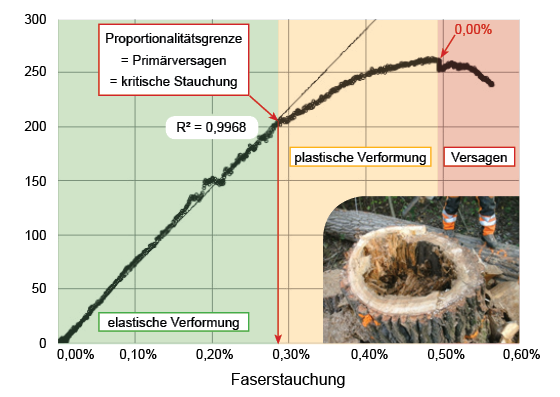Load analysis and safety estimation.
Understanding the load above which a tree will fail does not on it’s own allow a statement about a tree’s safety. To allow a statement regarding safety, the load acting on the tree crown during strong wind events must also be estimated. A wind load analysis considers properties of the wind at the tree location and relevant tree characteristics, such as height, crown area and vibration properties to estimate a design wind load that the tree must be able to carry
The predicted resisting force of the tree trunk and root system is compared to the load that can be expected at the site during extreme wind events. Analogous to other engineering methods, this results in a safety factor that reflects the relationship between the load-bearing capacity of the structure and the expected load. If the resisting force corresponds exactly to the expected wind loads, the safety factor would be 1.0. A safety factor of 1.5 is required for the likelihood of failure of the tree to be considered acceptable, since imponderables in the assessment and deviations from the reference values must be accounted for by a safety margin.



